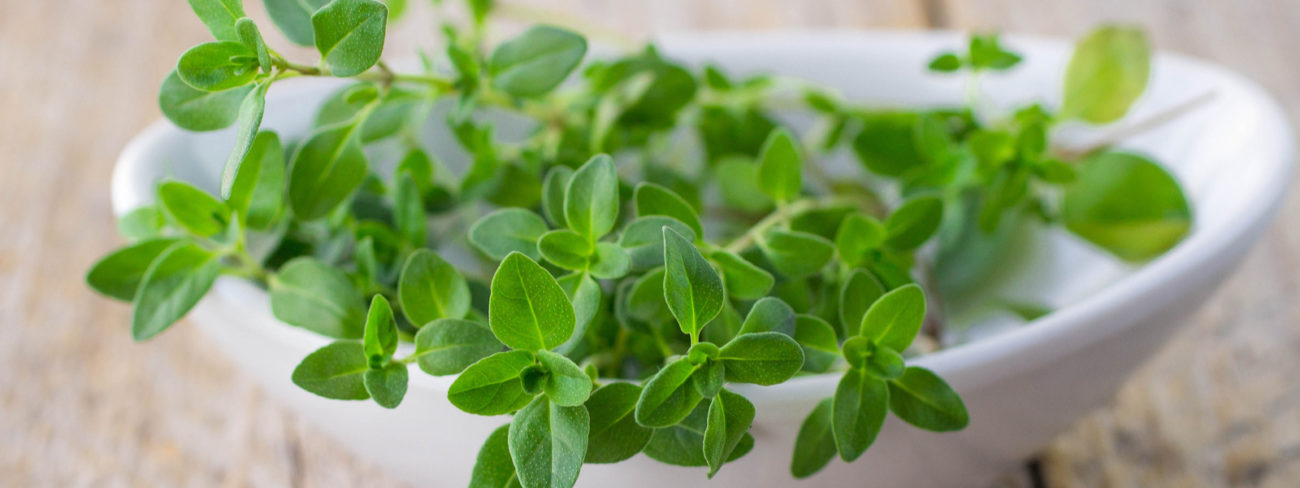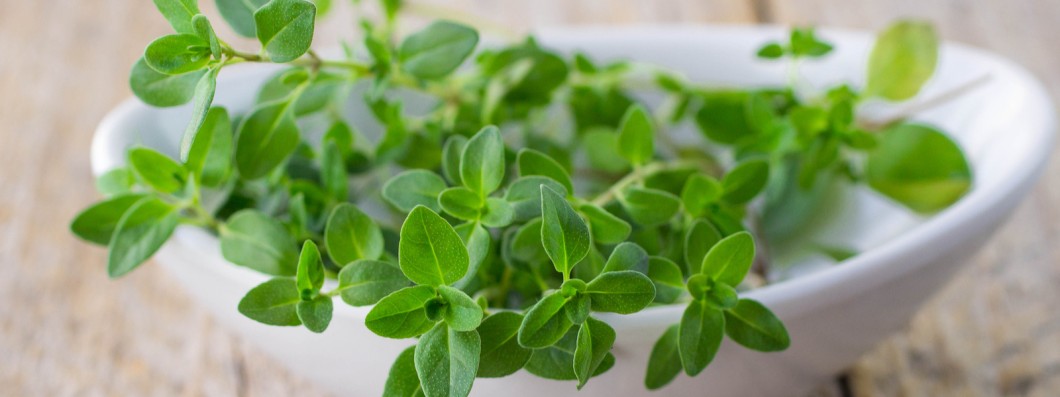Add flavor and freshness to any meal with some fresh herbs. To help you get cooking with herbs and teach you how to keep them fresh, we’ll cover when to use fresh herbs and dried herbs, how to properly store them so that they’ll last longer, our 3 tips for cooking with herbs, and we’ll tell you all about herbs and their flavors. By the end, you’ll have lots of fresh herbaceous ideas!
A Few Fresh Leaves Make a World of Difference
When we started cooking, we relied on recipes to help us through the process. Although we were quite strict about following every instruction, we would typically leave out whatever herb the recipe call for. We couldn’t imagine that a few leaves could make a huge difference in a dish. Plus, they spoiled so quickly after bringing them home from the store.
However, as we gained more cooking experience, we discovered that a few leaves do make a difference! Imagine bruschetta without basil or salsa without cilantro. These fresh herbs add prominent flavors to these foods, and they just wouldn’t be the same without them.
Since then, we’ve explored the fascinating world of herbs and experimented with adding them to different dishes to learn more about their flavors, textures, and aromas. We’ve compiled all our finding together in this guide that tells you the flavors of each herb, as well as what foods they go best with.

Guide to Flavoring with Fresh Herbs
Add flavor and freshness to your cooking.
Add flavor & freshness with our Guide to Herbs eBook
Our eBook teaches you how to cook with fresh herbs and properly store them.
Experiment with Flavor Possibilities
One of the greatest appeals of herbs is that fresh taste they add to a meal. When an herb is dried, it loses many of the properties that give it that quality, and the result is a more deep, concentrated flavor that tastes almost entirely different. Because of this, some dishes work best with dried herbs, and some work best with fresh herbs.
Tender herbs, such as basil, parsley, and chives, tend to taste better fresh since their subtle flavor flavor is one of the most attractive qualities about them. Tougher herbs such as rosemary, oregano, and thyme actually taste better when their flavors are more concentrated through the drying process.
Another factor to consider when choosing between fresh or dried herbs is time of cooking. Because fresh herbs have a more subtle taste, they are best added to dishes with a shorter cooking time. If a dish takes longer to prepare, make sure you add the fresh herb toward the end of cooking so it maintains its flavor. Dried herbs are ideal for longer cooking times, because they release their flavors more slowly throughout the cooking process.
How to Properly Store Herbs
It’s no fun buying expensive fresh herbs only to use them for one recipe and have them go bad in less than a week. This was of the issues that deterred us from buying fresh herbs in our earlier cooking years. But don’t give up on them just yet! When stored properly, fresh herbs can actually last up to several weeks.
There are 2 methods depending on the herb:
1. PLANTING METHOD
- Trim the base of the stems with scissors or a knife
- Fill a jar (an old condiment jar works great) about a third to halfway with cold water
- Place the cut stems into the water
- Cover the jar with a plastic bag
- Secure with a rubber band at the base of jar to enclose the bag around the jar
- Place the “planted” herb in the fridge or leave it out on the countertop, depending on the herb (see our Guide to Flavoring with Herbs infographic for specification)
How to Store Herbs
Learn how to store herbs so that they'll stay fresher longer and last you for many recipes.
2. TOWEL METHOD
- Wrap the herbs in a damp paper towel
- Put the wrapped herbs in a Ziploc bag
- Place the herbs in the fridge
Very simple, and now you can enjoy those fresh herbs in many different recipes!
3 Tips for Cooking with Herbs
When cooking with herbs, we like to keep these 3 tips on hand to help us get the most and best flavor out of herbs.
1. GROW YOUR OWN HERBS
Gardening might not be for everyone, but growing your own herbs and can help keep the cost down. If you’d like to give it a shot, try these tips for growing an indoor herb garden from the blog My Life and Kids.
2. USE A SHARP KNIFE OR HERB SCISSORS
Using a sharp knife or herb scissors to chop fresh herbs will help cut rather than crush the delicate herb leaves. Crushing leads to bruised, blackened herbs, and no one wants that! Watch our video below to see how we chop fresh herbs.
3. SUBSTITUTING DRIED & FRESH HERBS
If you’d like to use fresh herbs instead of dried herbs in a recipe, add 3 to 4 times more fresh herbs than the recipe call for and add it in at the end. Similarly, in reverse, if a recipe calls for 1 tablespoon of fresh oregano, substitute for 1 teaspoon of dried oregano, since 3 teaspoons equals 1 tablespoon. And remember, since dried herbs release their flavors throughout the cooking process, add it in the beginning of cooking.
How to Chop Cilantro or Parsley
Learn how to chop parsley using the 'pivot-and-fan' chopping technique with this short video.
